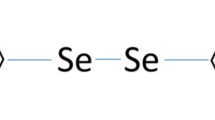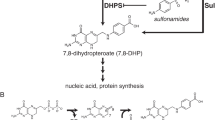Abstract
RABBIT-muscle α-glycerophosphate dehydrogenase, which catalyses the reaction:  was first crystallized by Baranowski1. More recently, Beisenherz et al.
2 and Young and Pace3 have reported work in which this enzyme was studied with respect to a number of physical and chemical properties. In all cases where the above reaction was studied by measuring the reduction of dihydroxyacetone phosphate, this substrate had been prepared enzymatically4. In connexion with work on the metabolism of acetol phosphate (monohydroxyacetone phosphate)5, dihydroxyacetone phosphate was prepared by the procedure described by Ballou and Fischer6 and it was used in the experiments reported here. It was observed that dialysis of solutions of α-glycerophosphate dehydrogenase—which contained ammonium sulphate during preparation by the published procedure2—resulted in an appreciable loss of activity in some fractions (details of these experiments will be published elsewhere). Activities were determined by the spectrophotometric method of Beisenherz et al.
2. When ammonium sulphate was added back to the previously dialysed enzyme, a strong diminution of activity was noted as compared to activity of dialysed enzyme to which no ammonium sulphate was added. It was established, by comparing the effect of the corresponding sodium and potassium salts on the enzymatic activity, that this inhibitory effect was due to the anionic portion of the ammonium sulphate molecule. In addition, the ammonium, sodium and potassium salts of hydrochloric acid and the ammonium and sodium salts of formic and sulphurous acids were tested for an inhibitory effect.
was first crystallized by Baranowski1. More recently, Beisenherz et al.
2 and Young and Pace3 have reported work in which this enzyme was studied with respect to a number of physical and chemical properties. In all cases where the above reaction was studied by measuring the reduction of dihydroxyacetone phosphate, this substrate had been prepared enzymatically4. In connexion with work on the metabolism of acetol phosphate (monohydroxyacetone phosphate)5, dihydroxyacetone phosphate was prepared by the procedure described by Ballou and Fischer6 and it was used in the experiments reported here. It was observed that dialysis of solutions of α-glycerophosphate dehydrogenase—which contained ammonium sulphate during preparation by the published procedure2—resulted in an appreciable loss of activity in some fractions (details of these experiments will be published elsewhere). Activities were determined by the spectrophotometric method of Beisenherz et al.
2. When ammonium sulphate was added back to the previously dialysed enzyme, a strong diminution of activity was noted as compared to activity of dialysed enzyme to which no ammonium sulphate was added. It was established, by comparing the effect of the corresponding sodium and potassium salts on the enzymatic activity, that this inhibitory effect was due to the anionic portion of the ammonium sulphate molecule. In addition, the ammonium, sodium and potassium salts of hydrochloric acid and the ammonium and sodium salts of formic and sulphurous acids were tested for an inhibitory effect.
This is a preview of subscription content, access via your institution
Access options
Subscribe to this journal
Receive 51 print issues and online access
$199.00 per year
only $3.90 per issue
Buy this article
- Purchase on SpringerLink
- Instant access to full article PDF
Prices may be subject to local taxes which are calculated during checkout
Similar content being viewed by others
References
Baranowski, T., J. Biol. Chem., 180, 535 (1949).
Beisenherz, G., Boltze, H. J., Buoher, T. H., Czok, R., Garbade, K. H., Meyer-Ardendt, E., and Pfleiderer, G., Z. Naturforsch., 8B, 555 (1953).
Young, H. L., and Pace, N., Arch. Biochem. Biophys., 75, 125 (1958).
Meyerhof, O., and Lohmann, K., Biochem. Z., 271, 89 (1934).
Sellinger, O. Z., and Miller, O. N., Biochim. Biophys. Acta, 29, 74 (1958).
Ballou, C. E., and Fischer, H. O. L., J. Amer. Chem. Soc., 78, 1659 (1956).
Pfleiderer, G., Jeckel, D., and Wieland, T., Biochem. Z., 328, 187 (1956).
Theorell, H., Nygaard, A. P., and Bonnichsen, R., Acta Chem. Scand., 9, 1148 (1955).
Author information
Authors and Affiliations
Rights and permissions
About this article
Cite this article
SELLINGER, O., MILLER, O. Anion Inhibition of α-Glycerophosphate Dehydrogenase. Nature 183, 889–890 (1959). https://doi.org/10.1038/183889b0
Issue date:
DOI: https://doi.org/10.1038/183889b0



